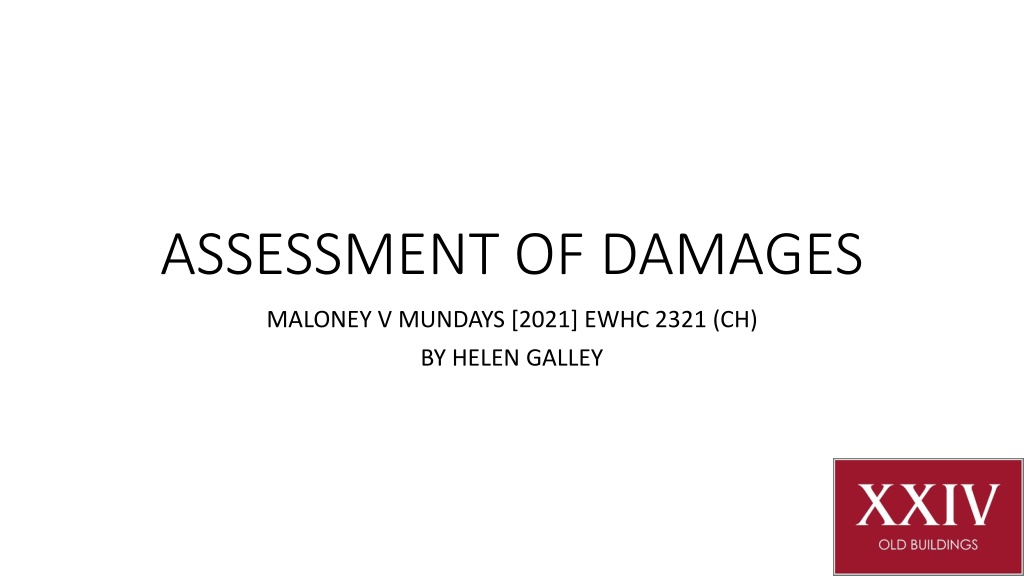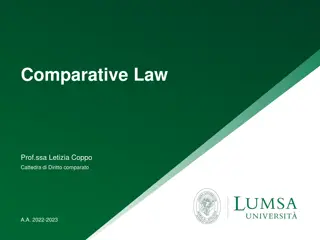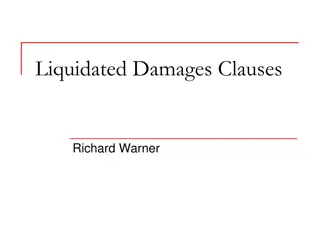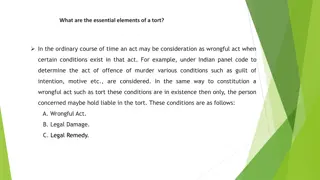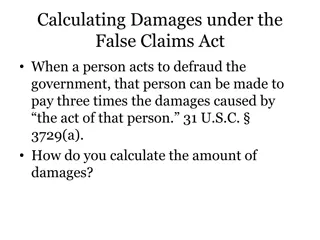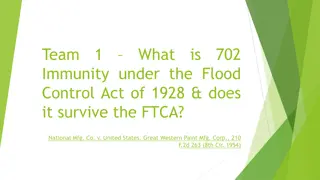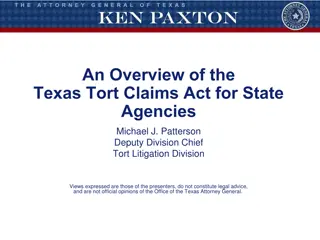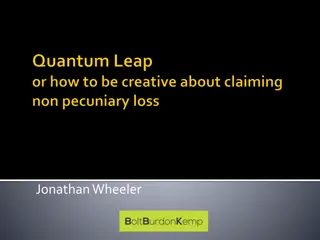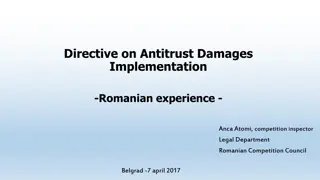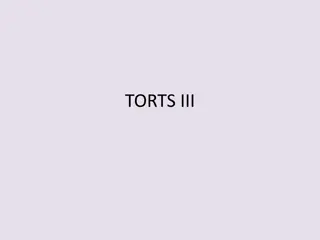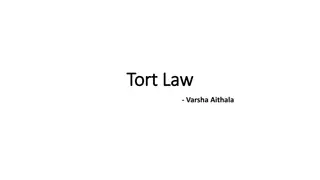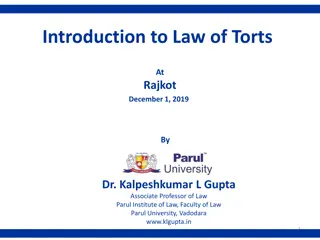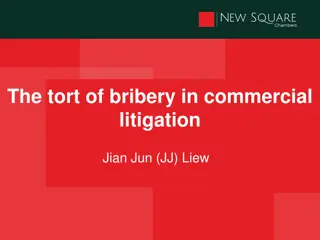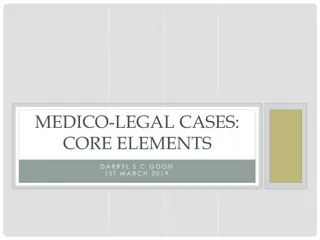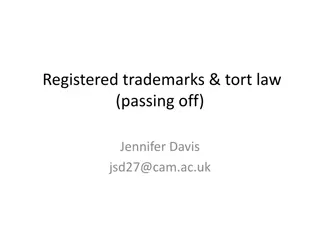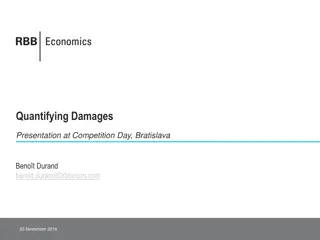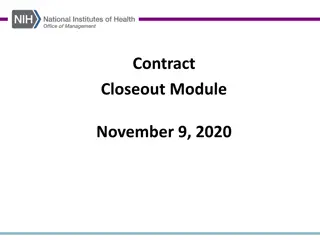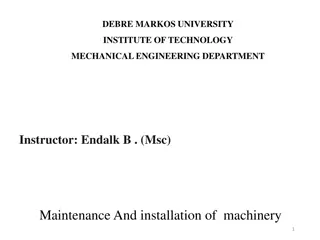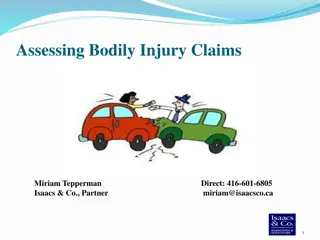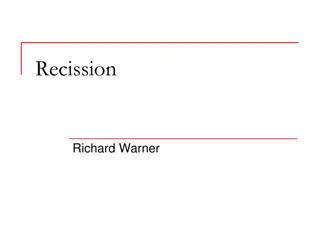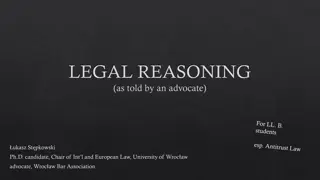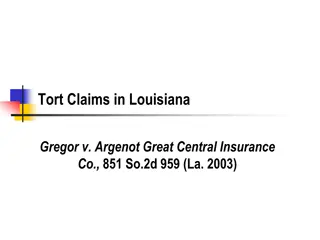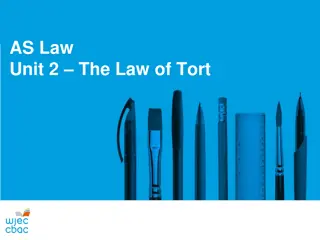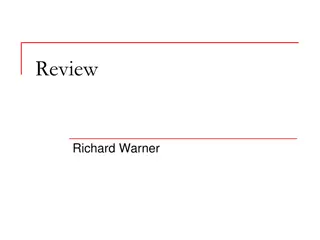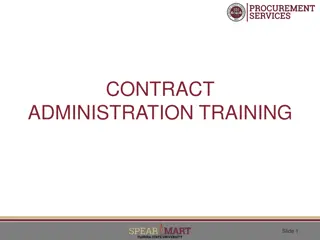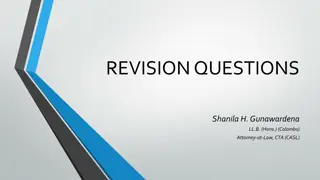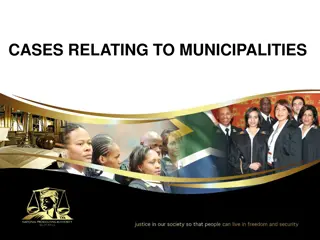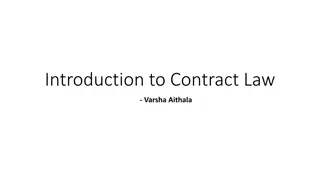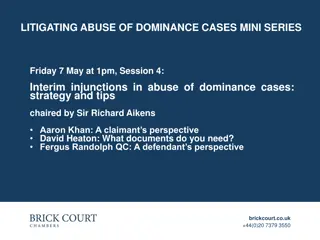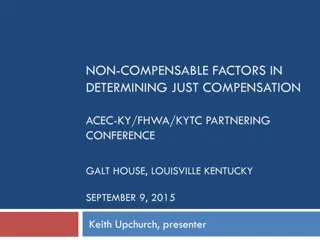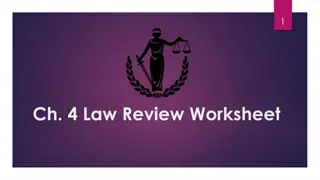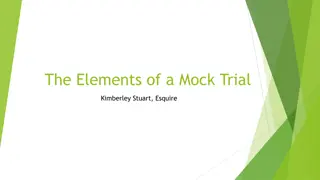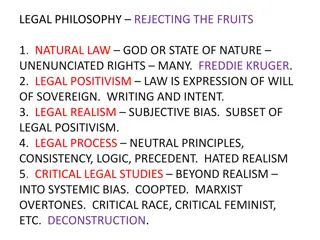Legal Principles for Assessment of Damages in Contract and Tort Cases
In the assessment of damages in legal cases involving breaches of contract or tortious acts, various principles come into play. These include the normal rule of compensation, the diminution in value rule, and different approaches to determine the extent of compensation based on factors such as property value, timing of the breach, and overall compensatory requirements. Courts analyze each case individually, considering the specific circumstances to ensure fair and appropriate compensation for the injured party.
Download Presentation

Please find below an Image/Link to download the presentation.
The content on the website is provided AS IS for your information and personal use only. It may not be sold, licensed, or shared on other websites without obtaining consent from the author. Download presentation by click this link. If you encounter any issues during the download, it is possible that the publisher has removed the file from their server.
E N D
Presentation Transcript
ASSESSMENT OF DAMAGES MALONEY V MUNDAYS [2021] EWHC 2321 (CH) BY HELEN GALLEY
THE NORMAL RULE THE NORMAL RULE Livingstone v Raywards Coal Co (1880) 5 App. Cas. 25, 39 That sum of money which will put the party who has been injured, or who has suffered, in the same position that he would have been in if he had not sustained the wrong for which he is now getting his compensation or reparation
County Personnel v Pulver [1987] 1 W.L.R. 916 Bingham LJ On the authorities as they stand the diminution in value rule appears almost always, if not always, to be appropriate where property is acquired following negligent advice by surveyors. that is not, however, an invariable approach, at least in claims against solicitors, and should not be mechanistically applied in circumstances where it may appear inappropriate. While the general rule undoubtedly is that damages for tort or breach of contract are assessed at the date of the breach . this rule also should not be mechanistically applied in circumstances where assessment at another date may more accurately reflect the overriding compensatory rule
Reeves v Thrings & Long [1996] PNLR 265 P purchased a hotel where access was by licence only and the purchaser spent money rectifying the problem when it came to light four years after purchase P brought proceedings against its solicitors for breach of contractual and tortious duty The Court concluded there was no liability but did consider, obiter, what the proper approach to assessment of damages might have been and came up with three possible approaches
The three approaches The purchaser s entire outlay on the purchase and refurbishment of the hotel clearly overcompensation To apply the difference in value test at the date when the problem came to light i.e. 4 years after purchase together with any other consequential claims The cost of rectifying the problem when it came to light The Court concluded that it was inappropriate in that case to rule on the correct approach as a matter of principle as the assessment of damages is essentially a factual exercise
Oates v Anthony Pitman & Co [1998] PNLR 683 Court of Appeal suggested there were at least three possible approaches to the assessment of damages The difference in value rule which was applied using evidence of the value of comparable properties Where the property was unusual or being purchased for a particular purpose to the knowledge of the solicitor or there was a substantial period of time before the defect came to light the estimated costs of rectifying the defect might be the most reliable guide to diminution in value Where the purchaser has managed to extract himself from the transaction he would not have entered but for the negligence of the solicitor, the costs incurred in extraction
MALONEY V MUNDAYS [2021] EWHC 2321 (CH) MALONEY V MUNDAYS [2021] EWHC 2321 (CH) Related to the purchase by Maloneys Retail Stores Limited ( MRS ) in September 2006 of a business comprising a Budgens store and the freehold land associated with the store. The freehold land included a customer car park and an area of land which was ripe for development with the benefit of planning permission for residential development The sale was part of a scheme whereby Budgens, which had been taken over by Musgrave and resolved to become wholesale only, was divesting itself of over 200 hundred stores most of which were leasehold but a few were freehold.
Budgens produced a suite of draft documentation which was mostly standard for each transaction including a business sale agreement, an option and pre-emption deed, a retailer agreement and an occupational charge agreement. Each purchaser was to be tied in to Budgens for its stock etc for a period of time There was scope, albeit limited, to amend the standard documentation In relation to the store in issue, in Ascot, the purchaser was also to be made subject to an overage deed so that if the purchaser wished to develop the land at the rear during the period of 15 years Budgens was to be entitled to a payment which would effectively make development uneconomic Budgens suggested three firms of solicitors to purchaser of which Mundays was one
The fact that the land was freehold was of importance to MRS no obligation to pay a commercial rent and also if store failed there would be an asset which could be sold which had been valued free from the Budgens agreements at 3.4m There had never been any mention of Budgens retaining any part of the freehold land in its Ascot title The draft documentation described the property as all the land in a particular title number which comprised all the land Budgens owned in Ascot After Mundays were retained in January 2006 and asked Mr Maloney to confirm, which he did, that what he was expecting to purchase was the land shown edged red on a plan which was all the land in the relevant title.
In fact and unknown to MRS the draft transfer annexed to the Business Sale Agreement was a TP1 i.e. a transfer of part which excluded part of the access from the highway to the land at the rear of the store including the car park and the development site The draft transfer included the grant of an express right of way to gain access to and egress from the Budgens Store on the land and all implied rights were expressly excluded The draft also included a restrictive covenant restricting the ability to develop the land at the rear without the consent of Budgens or its successor Mundays failed to advise MRS about the significance of the TP1, that land was being retained and the consequences of that on access and the ability to sell to a purchaser who did not want to run a Budgens Store or to develop the land at the rear The retained land was a ransom strip
MRS only discovered that land had been retained in June 2017 i.e. 11 years after purchase when the business had ceased to be profitable and it was seeking to sell the business and property to a third party which did not want to trade as a Budgens. MRS was informed of the ransom strip by Budgens, by then owned by Booker. Booker s position was that the access could be used so long as the store was a Budgens but not for any other purpose. The business and property was unsaleable unless the retained land was acquired. After negotiation the best price MRS could negotiate was 800,000 The retained land was acquired in 2018
On sale of the shares in MRS Vince Maloney took an assignment of the claim against Mundays The proceedings against Mundays were issued on 29 July 2019 They were defended on liability, causation and loss including a limitation defence until 29 April 2021, the day on which skeleton arguments for trial were to be exchanged. On 29 April 2021 liability was admitted and it was further admitted that MRS was unaware of the retention of land until June 2017 The questions to be determined at trial were causation and loss Mundays argued, inter alia, that any loss should be assessed at 2006 and would be confined to the difference in value between what was paid and the value without the retained land which, according to the defendant s expert was nil!
Maloneys argument was that the price which had to be paid in 2018 was the best evidence of loss i.e. 800,000 In the alternative if the loss was to be assessed as diminution in value at 2006 then Maloney s expert concluded the diminution taking into account the effect on access and on development but also the restrictions imposed by the suite of Budgens agreements was between 420,000 and 617,000 The Deputy Judge, Elizabeth Jones QC , took the cases referred to above into account and concluded that bearing in mind the length of time between purchase and discovery of the problem it was open to Mr Maloney to seek to establish that the best evidence of the difference in value between the value of the assets purchased in 2006 with and without the retained land was the 800,000 paid by MRS in 2018
As a result of the negligence of Mundays, MRS did not have the opportunity to rectify the situation in 2006 Had they known of the problem in 2006 and chosen not to rectify it until it wished to sell in 2017 the Judge would have had sympathy of the Defendant s argument that loss should be assessed as diminution in value at 2006 MRS did not know about the problem until 2017 As a result loss should be assessed at the date when MRS were able to and needed to rectify the situation To award damages assessed in 2006 would be an artificial exercise and would not satisfy the basic rule referred to in Pulver.
